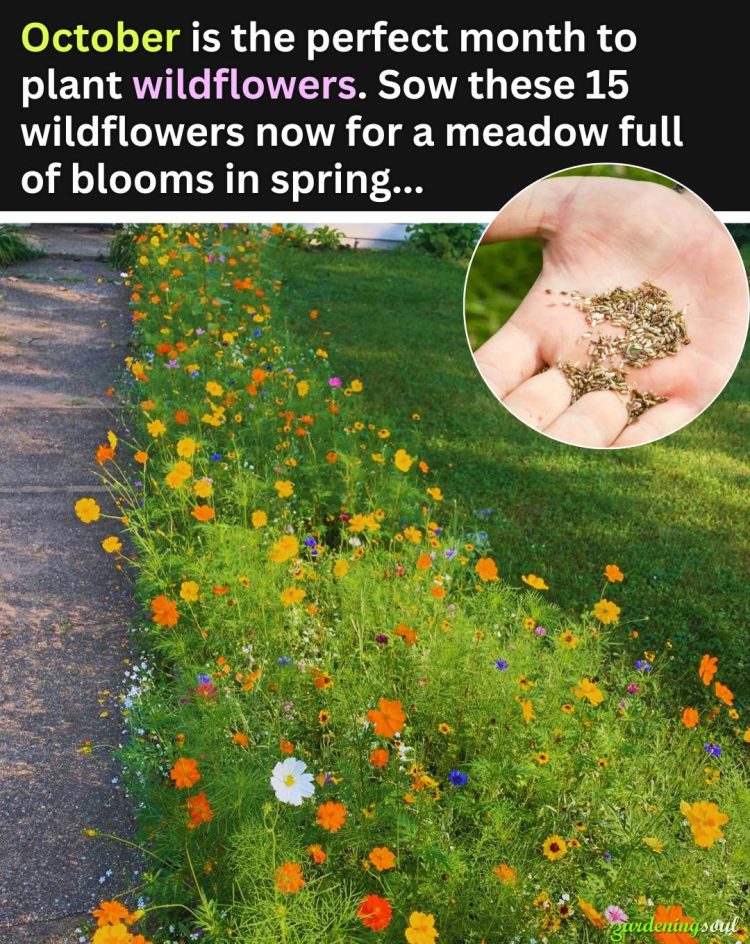Sow in light, well-draining soil.
Prefers sunny spots but tolerates partial shade.
Excellent for cutting gardens and dried arrangements.
3. Black-Eyed Susan (Rudbeckia hirta)
Why Plant It: With cheerful golden petals and dark centers, Black-Eyed Susans bring warmth and resilience to meadows.
Bloom Time: Summer, often from the first year.
Height: 18–36 inches.
Wildlife Value: Attracts pollinators and provides seeds for birds in fall.
Zones: 3–9 (short-lived perennial/biennial).
Companions: Coneflowers, daisies, blanket flowers.
Growing Tips:
Thrives in full sun, tolerates poor soils.
Sow directly, as roots are sensitive to transplanting.
Low maintenance once established.
4. Lupine (Lupinus spp.)
Why Plant It: Lupines add vertical interest with tall spikes of purple, blue, pink, or yellow. They also enrich the soil by fixing nitrogen.
Bloom Time: Spring to early summer.
Height: 1–3 feet.
Wildlife Value: Essential for bumblebees and some butterfly larvae.
Zones: 4–8.
Companions: Poppies, daisies, foxgloves.
Growing Tips:
Prefers sandy, well-draining soil.
Cold stratification improves germination (which naturally happens when planted in October).
Space generously; they dislike crowding.
5. Coreopsis (Coreopsis tinctoria)
Why Plant It: Known as “tickseed,” coreopsis offers sunny yellow or red-tipped flowers that bloom for weeks.
Bloom Time: Early to late summer.
Height: 12–36 inches.
Wildlife Value: Attracts bees, butterflies, and beneficial insects.
Zones: 3–10.
Companions: Blanket flowers, cosmos, rudbeckia.
Growing Tips:
Thrives in poor soils with full sun.
Deadhead for extended blooming.
Tolerant of drought once established.
6. Cosmos (Cosmos bipinnatus)
Why Plant It: Cosmos produce daisy-like flowers in pink, white, or purple that add lightness and movement to meadows.
Bloom Time: Summer through frost.
Height: 2–6 feet.
Wildlife Value: A magnet for butterflies and hoverflies.
Zones: 2–11 (annual).
Companions: Zinnias, poppies, coreopsis.
Growing Tips:
Prefers full sun and average to poor soils.
Self-seeds easily; expect returns year after year.
Stake taller varieties in windy areas.
7. Blanket Flower (Gaillardia pulchella)
Why Plant It: This hardy perennial produces fiery red, orange, and yellow flowers that thrive in dry conditions.
Bloom Time: Summer through fall.
Height: 12–24 inches.
Wildlife Value: Attracts bees and butterflies; seed heads feed finches.
Zones: 3–10.
Companions: Coreopsis, rudbeckia, echinacea.
Growing Tips:
Excellent for sandy or rocky soils.
Cut back after first blooms to encourage more flowers.
Tolerates heat and drought.
8. Shasta Daisy (Leucanthemum × superbum)
Why Plant It: The classic daisy adds cheerful white blooms with yellow centers, perfect for cutting gardens and meadows.
Bloom Time: Late spring to midsummer.
Height: 1–3 feet.
Wildlife Value: Loved by pollinators; deer-resistant.
Zones: 4–9.
Companions: Coneflowers, black-eyed Susans, coreopsis.
Growing Tips:
see continuation on next page
